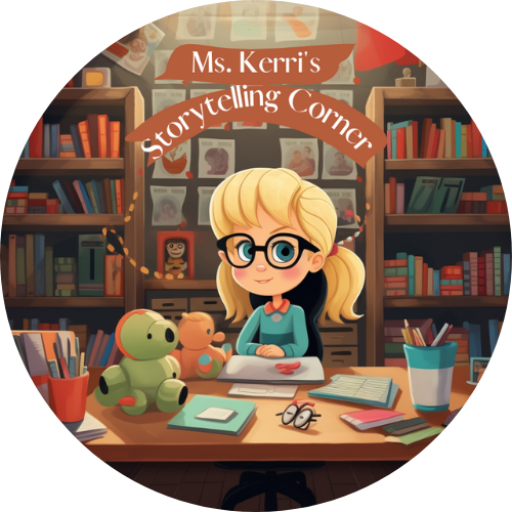In this article, we will explore various sensory play ideas designed to engage and stimulate the senses of preschoolers. From nature exploration to artistic experiences and culinary adventures, these activities are not only fun but also contribute to the holistic development of young children. Let’s dive into the world of sensory play and discover the exciting ways in which preschoolers can explore their senses.
Key Takeaways
- Sensory play is essential for the holistic development of preschoolers.
- Engaging the senses through nature exploration fosters a love for the natural world.
- Artistic sensory experiences encourage creativity and self-expression in young children.
- Culinary adventures for the senses provide opportunities for taste exploration and food appreciation.
- Sensory play activities can be tailored to accommodate different sensory preferences and sensitivities.
Engaging the Senses Through Nature Exploration

Sensory Activities in the Garden
Engaging preschoolers in sensory activities in the garden allows them to connect with nature in a profound way. Hands-on experiences with soil, plants, and water not only stimulate their senses but also encourage curiosity and a love for the environment.
- Touch and feel different types of leaves and flowers to explore texture.
- Listen to the sounds of nature, from bird calls to the rustling of leaves.
- Smell the various scents of flowers and herbs.
Encouraging children to engage with nature through their senses supports their overall development and fosters a deep appreciation for the environment.
Creating a simple spring garden sensory bin can be an excellent way to introduce young learners to the joys of gardening. Fill a large container with soil, add plastic flowers, miniature gardening tools, and small toy insects for a comprehensive sensory experience.
Exploring Texture and Touch in Nature
Nature offers an unparalleled canvas for preschoolers to explore the sense of touch. By engaging with the natural world, children can discover a wide range of textures that stimulate their tactile senses. Encourage them to feel the bark of trees, the smoothness of rocks, and the softness of moss.
Preschoolers can learn a lot about the natural world by simply paying attention to the different textures they encounter.
Here’s a list of activities to enhance their tactile exploration:
- Touch and guess games with natural objects
- Creating texture boards with collected items
- Comparing the feel of different leaves, flowers, and seeds
Each activity is designed to foster curiosity and a deeper understanding of nature through touch. By exploring texture and touch in nature, children not only develop their sensory skills but also their observational and descriptive abilities.
Sensory Scavenger Hunt
A Sensory Scavenger Hunt is an exhilarating way to engage preschoolers with the natural world around them. By turning a simple walk in the park into a quest for sensory treasures, children can explore and appreciate the subtleties of nature in a fun and interactive manner.
Creating a sensory scavenger hunt is straightforward and adaptable to any environment. Whether in a backyard, a local park, or even indoors with plant and nature-based items, the key is to include items that stimulate all the senses. Here’s a simple guide to get started:
- Sight: Look for leaves of different colors, shapes, and sizes.
- Touch: Find objects with varied textures, such as smooth stones, rough bark, or soft moss.
- Hearing: Listen for natural sounds, like the rustling of leaves or the chirping of birds.
- Smell: Search for flowers or plants with distinctive scents.
- Taste: (with caution) Identify edible plants or fruits, ensuring they are safe for consumption.
Remember, the goal is to make the experience enjoyable and educational, fostering a deeper connection with nature while enhancing sensory awareness.
Artistic Sensory Experiences
Mess-Free Sensory Art Projects
Introducing mess-free sensory art projects to preschoolers not only sparks their creativity but also minimizes cleanup for educators and parents. One popular method is using ziplock bags filled with paint. Children can squish, mix, and create patterns through the bag, experiencing the joy of color without the mess.
Ziplock bag painting offers a tactile experience without direct contact with paint, making it ideal for children who may not enjoy getting their hands dirty. Additionally, this method promotes fine motor skills as children manipulate the bags to mix colors and create designs.
Remember, the goal of sensory art is not perfection but exploration and enjoyment.
Here are a few more mess-free art project ideas:
- Drawing with water on a chalkboard or sidewalk
- Creating digital art on tablets
- Using sticky notes for color matching and pattern creation
Each of these activities provides a unique sensory experience, encouraging children to explore their artistic side in a clean and controlled environment.
Sensory Exploration Through Music and Dance
Sensory exploration through music and dance offers a vibrant and engaging way for preschoolers to connect with their environment and emotions. By incorporating a variety of musical styles and dance movements, children can experience a wide range of sensory stimuli, fostering both physical and emotional development.
Music and dance activities are not only fun but also instrumental in enhancing coordination, balance, and rhythm in young learners. These activities encourage children to express themselves creatively and build confidence in their abilities.
Preschoolers can engage in sensory exploration through music and dance by participating in activities such as:
- Movement in Transitions
- Winter-Themed Brain Breaks
- Singing Skills
- Sensory Music and Movement
- Shake Out the Sillies
- Freeze Dance
- Music with Props
By integrating music and dance into the daily routine, educators can create a dynamic learning environment that stimulates all the senses.
Culinary Adventures for the Senses

Sensory Cooking and Baking Activities
Introducing preschoolers to the kitchen is not just about teaching them to cook; it’s about engaging their senses in a vibrant world of colors, textures, and flavors. Cooking and baking activities can be a delightful way for children to explore their senses while learning valuable life skills.
- Making pizza: Children can feel the dough, smell the herbs, and see the colorful toppings.
- Decorating cookies: Offers a canvas for creativity with various icings and sprinkles.
- Creating fruit salads: Encourages identification and tasting of different fruits.
Cooking with preschoolers can foster a sense of accomplishment and curiosity about food.
It’s essential to choose recipes that are safe and suitable for young children, focusing on simple, sensory-rich experiences. This can include activities like kneading dough, tearing lettuce for salads, or using cookie cutters on soft fruits.
Taste Testing and Flavor Exploration
Taste testing and flavor exploration activities are a delightful way to engage preschoolers’ sense of taste, encouraging them to broaden their palate and appreciate a variety of flavors. These activities can also serve as an introduction to healthy eating habits.
When planning taste testing sessions, consider including a variety of textures and temperatures to make the experience more enriching for the children.
Here’s a simple structure for organizing a taste testing activity:

- Select a range of foods from different categories (fruits, vegetables, dairy, etc.)
- Prepare small, bite-sized portions.
- Create a chart for children to record their likes, dislikes, and any new tastes they discover.
- Encourage open discussion about the flavors, asking questions like “What does this remind you of?” or “Do you like the sweet or savory taste better?”
Incorporating sensory elements into culinary activities not only makes learning about food fun but also helps children develop a nuanced understanding of taste. By engaging in taste testing, preschoolers learn to express their preferences and gain confidence in trying new foods.
Conclusion
In conclusion, sensory play is a valuable and enjoyable way for preschoolers to explore and develop their senses. By engaging in sensory activities, children can enhance their cognitive, social, and emotional skills while having fun. Encouraging sensory play at home and in educational settings can support children’s overall development and provide them with rich learning experiences.
Frequently Asked Questions
What age group is sensory play suitable for?
Sensory play is suitable for preschoolers and young children, typically ages 2-5. It is important to provide age-appropriate sensory experiences for safety and developmental reasons.
How can I incorporate sensory play into outdoor activities?
You can incorporate sensory play into outdoor activities by engaging children in nature exploration, such as gardening, texture and touch experiences, and sensory scavenger hunts. These activities provide opportunities for sensory stimulation and connection with the natural environment.
What are some mess-free sensory art projects for preschoolers?
Mess-free sensory art projects for preschoolers include activities like sensory painting with ziplock bags, creating sensory collages with textured materials, and using sensory playdough to sculpt and explore different textures.
How can I encourage picky eaters to engage in taste testing and flavor exploration?
Encouraging picky eaters to engage in taste testing and flavor exploration can be done by making it a fun and interactive experience. Allow children to explore and taste small portions of different foods in a playful and non-pressured environment, encouraging them to use their senses to describe the flavors and textures.
What are the benefits of sensory cooking and baking activities for preschoolers?
Sensory cooking and baking activities for preschoolers provide opportunities for hands-on learning, sensory exploration, and development of fine motor skills. These activities also promote creativity, independence, and an appreciation for different tastes and textures.
How can sensory exploration through music and dance benefit preschoolers?
Sensory exploration through music and dance can benefit preschoolers by stimulating their auditory and kinesthetic senses, promoting movement and coordination, and fostering emotional expression and creativity. It also provides opportunities for social interaction and sensory integration.


Ms. Kerri’s Corner provides a exciting virtual space for preschool learning. Through a variety of engaging activities, she exposes young minds to early math, literacy, science and social-emotional skills in a developmentally appropriate way. Centers for blocks, art, books and music allow children to explore hands-on learning at their own pace. Guided lessons subtly introduce number sense, letter sounds and narrative thinking. Careful observation gives insight into each child’s progress across domains. Viewers are also invited to participate, reinforcing that their ideas are valued. By making learning fun yet purposeful, Ms. Kerri lays the groundwork for future academic success while fostering creativity and imagination. Her program offers preschoolers valuable screen-based learning experiences.




